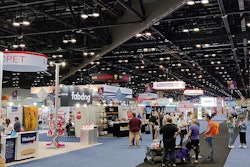
Among all the current challenges equipment suppliers are being asked to help solve, none requires more innovation than labor shortages. Access to manpower is a complicated prospect right now, for myriad reasons, and equipment can provide a solution they’re uniquely known for: Automation.
Doing more with less
“The one challenge everyone is having is access to reliable and dependable employees,” said Stephen King, vice president of global sales for ALKAR-RapidPak (a division of Middleby Food Processing), which manufactures an extensive line of continuous thermal meat processing systems. “Every new opportunity there is significant discussion around how to develop and provide solutions that limit human touches. Customers are looking for a consistent output they can manage with fewer people and fewer resources.”
The idea of increased automation in the production process was already there, a growing trend in pet food manufacturing, but the pandemic shifted the idea into overdrive.
“A couple of interesting dynamics we encountered pre-pandemic into the midst of the pandemic and now on the way out, too, there’s been a combination that we’ve heard from brand owners and the contract packagers,” said Tim Wiersma, director of marketing and business development for National Bulk Equipment, which creates custom processing and packaging equipment, systems and projects. “There used to be comments we’d hear on the show floor like, ‘Wow, someday I might get to the point where I’m able to use a bulk bag discharger, but right now we really don’t need that.’ Fast forward to now, and we’re hearing a lot of conversations along the lines of, ‘I can’t get labor to do the work on the 50-lb bag discharging or the emptying.’”
Solutions are a necessity, not a talking point
While automation has been of interest for years, for some companies it’s now sliding into the “imperative” category, as projects kick back in without the labor necessary to move things at a pre-pandemic pace.
“I think, depending on the industry and the project, there was always a curiosity in what automation could do for a customer,” said Chuck Johnson, director of sales for National Bulk Equipment. “But it really has almost exponentially climbed in the last couple of years with a lot of these people from ‘Well, that’s interesting” to ‘It’s almost become a necessity that I look at some type of automation because I have no other options and I don’t want to get stuck in this situation again.’ I feel like, and this is more than just the pet food industry, there’s a definite increased level of interest in automation we’re seeing that’s become more of a necessity.”
It's a challenge that equipment suppliers are beginning to build into their project planning.
“Getting a consistent and shelf-stable product, faster and with better throughput, is what customers are looking for,” said King. “Also, the ability to use automation and linear lines to decrease the reliance on people. Workforce changes have impacted our economy, and building solutions that use 33% less people at a minimum is part of our solutions approach.”
Labor supply is just one more piece to add to the currently multifaceted puzzle that is doing business right now. On the equipment side, it also means opportunity for innovative automation solutions for customers asking how to do more with less.
For the companion article, "2 top pet food equipment supplier challenges,” published in the April 2022 issue of Petfood Industry magazine, see www.PetfoodIndustry.com/articles/11118.

















